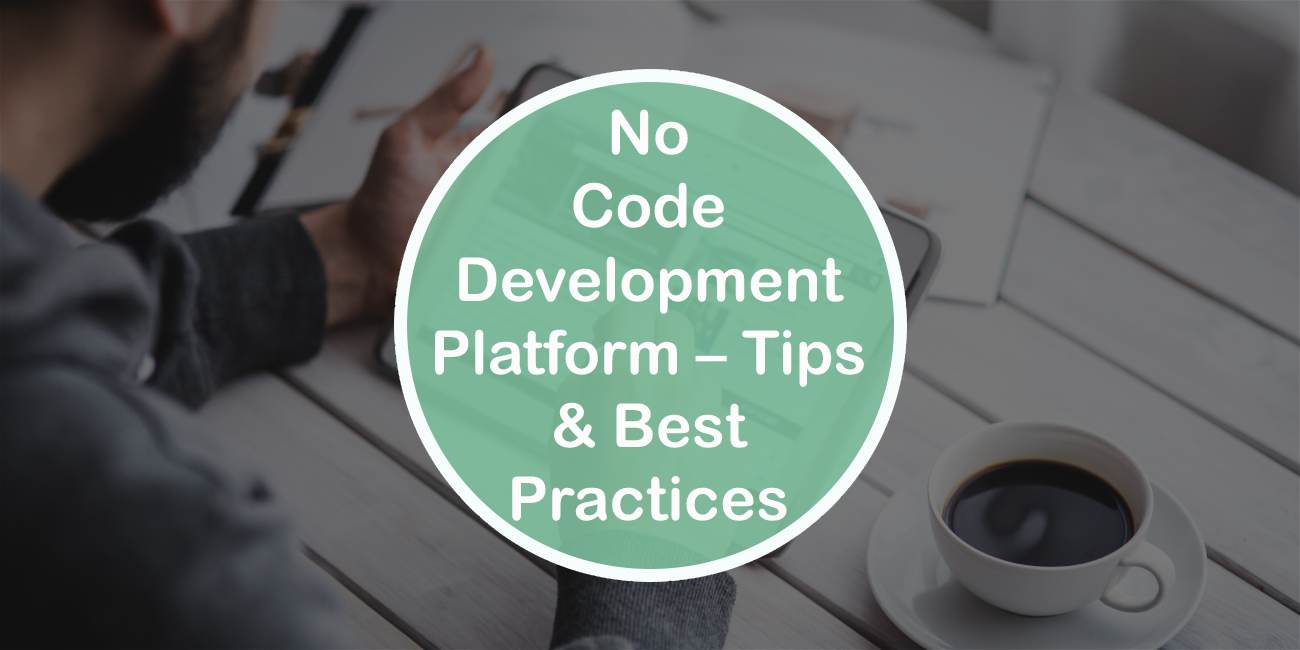No code development platforms have become increasingly popular in recent years, enabling individuals and businesses to create and deploy software applications without needing to write any code. These platforms provide a range of tools and resources to help users build, test, and launch their apps quickly and easily. However, like any new technology, there are certainly best practices and tips to follow for success. In this article, we will explore some of the top tips and best practices for success with no code development platforms.

Why do you Need a No Code Development Platform?
No code development platforms offer a range of benefits that make them a valuable tool for individuals and businesses looking to create software applications. Firstly, they enable users to create apps quickly and easily, without needing to write any code. This means that individuals and organizations can create custom solutions that meet their specific needs, rather than relying on off-the-shelf software that may not be tailored to their requirements. Secondly, no code development platforms are often more affordable than traditional software development, making them a cost-effective option for businesses. Finally, these platforms offer a range of integrations with other tools and services, such as email marketing, social media, and analytics, which can help streamline workflow and enhance the functionality of apps. Overall, no code development platforms are a powerful tool that enables individuals and businesses to create high-quality software applications quickly and easily, while also keeping costs low.
1. Define Your Goals and Objectives
Before starting any project on a no-code development platform, it’s important to define your goals and objectives. This means thinking about what you want to achieve with your app and how it will help you or your business. This will help you stay focused and ensure your app aligns with your overall vision and strategy.
2. Choose the Right Platform
There are many no-code development platforms available on the market, each with its strengths and weaknesses. When selecting a platform, it’s important to consider factors such as ease of use, features, pricing, and support. Some of the most popular no-code development platforms include Bubble, Airtable, Zapier, and Webflow. It’s important to research and tests out multiple platforms to find the one that best meets your needs.
3. Plan Your App
Once you have defined your goals and objectives and chosen a platform, it’s time to plan your app. This involves creating a wireframe or prototype that outlines the features and functionality of your app. It’s important to think through every aspect of your app, including user experience, design, and functionality. This will help ensure that your app is user-friendly and meets the needs of your target audience.
4. Keep it Simple
One of the key benefits of no-code development platforms is that they enable you to build apps quickly and easily. However, it’s important to keep your app simple and avoid overcomplicating things. This means focusing on the essential features and functionality of your app and avoiding unnecessary complexity.

5. Test and Iterate
Once you have built your app, it’s important to test and iterate it. This means testing every aspect of your app, including user experience, design, and functionality. It’s important to collect feedback from users and iterate your app based on their feedback. This will help ensure that your app is user-friendly and meets the needs of your target audience.
6. Leverage Integrations
No code development platforms often offer a range of integrations with other tools and services, such as email marketing, social media, and analytics. These integrations can help you streamline your workflow and enhance the functionality of your app. It’s important to research and takes advantage of these integrations to maximize the effectiveness of your app.
7. Engage with the Community
Many no-code development platforms have a community of users who share tips, best practices, and support. Engaging with this community can be a great way to learn from others and stay up-to-date with the latest developments in the space. It’s important to participate in online forums, attend webinars and events, and connect with other users to build your network and stay informed.
8. Stay Up-to-Date with the Latest Developments
Finally, it’s important to stay up-to-date with the latest developments in the no-code development space. This means keeping an eye on new platforms, features, and trends. It’s important to continue learning and experimenting with new tools and techniques to stay ahead of the curve and ensure the success of your apps.
In conclusion, no code development platforms offer a powerful and flexible way to create and deploy software applications without needing to write any code. To ensure success, it’s important to define your goals and objectives, choose the right platform, plan your app, keep it simple, test and iterate your app, leverage integrations, engage with the community, and stay up-to-date with the latest developments. By following these tips and best practices, you can create high-quality apps that meet the needs of your target audience and drive business success.

